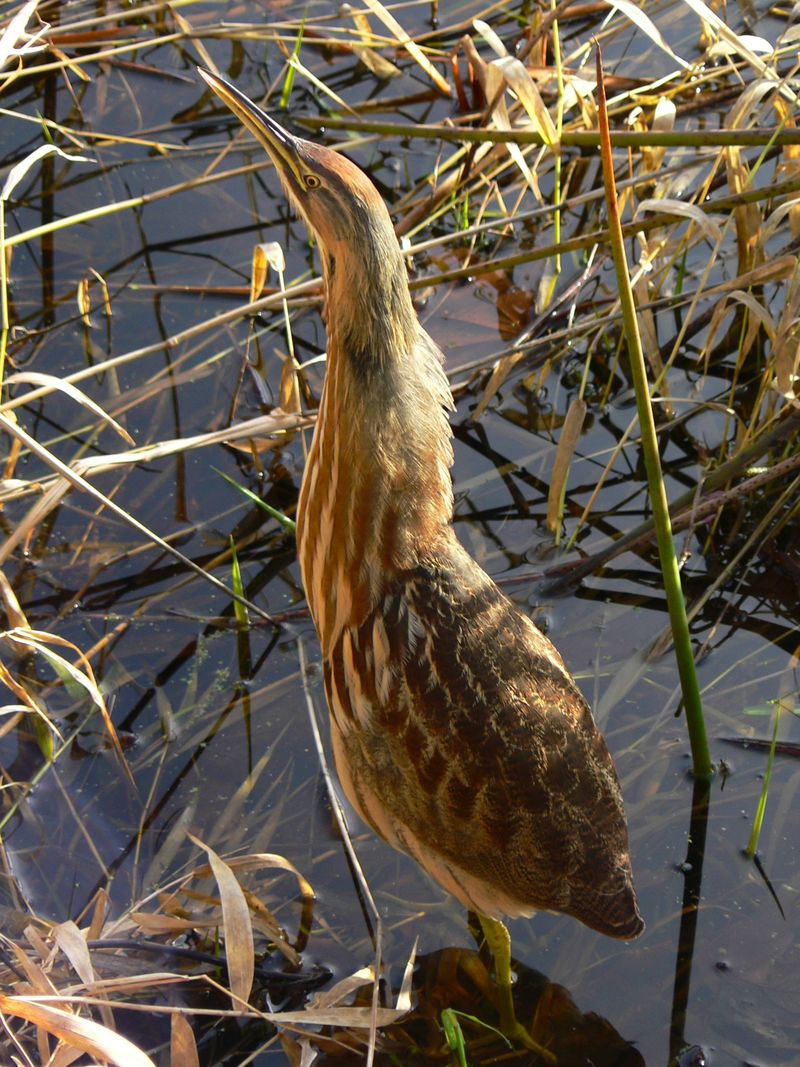| New Photos | Animal News | Animal Sounds | Animal Movies | Upload Photo | Copyright | Korean |
|---|
| Funny Animal Photos | Monsters in Animalia | Wiki Articles Fun Facts about Animals | Links | Home | Mobile A.P.A. |
|---|
| Image Info | Original File Name: Botaurus_lentiginosus_28079-American Bittern.jpg Resolution: 1920x2560 File Size: 726503 Bytes Upload Time: 2007:09:22 02:58:50 | |
| Author | Name (E-mail): Unknown | |
| Subject | American Bittern (Botaurus lentiginosus) - Wiki | |
 |
| Email : E-Card | Poster | Web Master Delete Edit Info Admin |
| Description | American Bittern (Botaurus lentiginosus) - Wiki
American Bittern
The American Bittern (Botaurus lentiginosus) is a wading bird of the heron family Ardeidae. It is a large, chunky, brown bird, very similar to the Eurasian Great Bittern, Botaurus stellaris. It is 59-70 cm (23-27 inches) in length, with a 95-115 cm (37 - 45 inch) wingspan. Although common in much of its range, the American Bittern is usually well-hidden in bogs, marshes and wet meadows. Usually solitary, it walks stealthily among cattails or bullrushes. If it senses that it has been seen, the American Bittern becomes motionless, with its bill pointed upward, causing it to blend into the reeds. It is most active at dusk. More often heard than seen, this bittern has a call that resembles a congested pump. Like other members of the heron family, the American Bittern feeds in marshes and shallow ponds, dining on amphibians, fish, insects and reptiles. This bittern winters in the southern United States and Central America. It summers throughout Canada and much of the United States. As a long-distance migrant, it is a very rare vagrant in Europe, including Great Britain and Ireland. This bird nests in isolated places with the female building the nest and the male guarding it. Two or three eggs get incubated by the female for 29 days, and the chicks leave after 6-7 weeks. No subspecies are accepted today. However, fossils found in the Ichetucknee River, Florida, and originally described as a new form of heron (Palaeophoyx columbiana; McCoy, 1963) were later recognized to be a smaller, prehistoric subspecies of the American Bittern which lived during the Late Pleistocene (Olson, 1974) and would thus be called B. l. columbianus. This bird's numbers have declined in the southern parts of its range due to habitat loss. Many of the folk names are given for its distinctive call made by inhaling and exhaling large quantities of air. Protected status The American Bittern (Botaurus lentiginosus) is protected under the Migratory Bird Treaty Act of 1918. http://en.wikipedia.org/wiki/American_Bittern
| |||
| Copyright Info | AnimmalPicturesArchive.com does not have the copyright for this image. This photograph or artwork is copyright by the photographer or the original artist. If you are to use this photograph, please contact the copyright owner or the poster. |
|
|
|
| |||||||
| CopyLeft © since 1995, Animal Pictures Archive. All rights may be reserved. | ||||||||
Stats